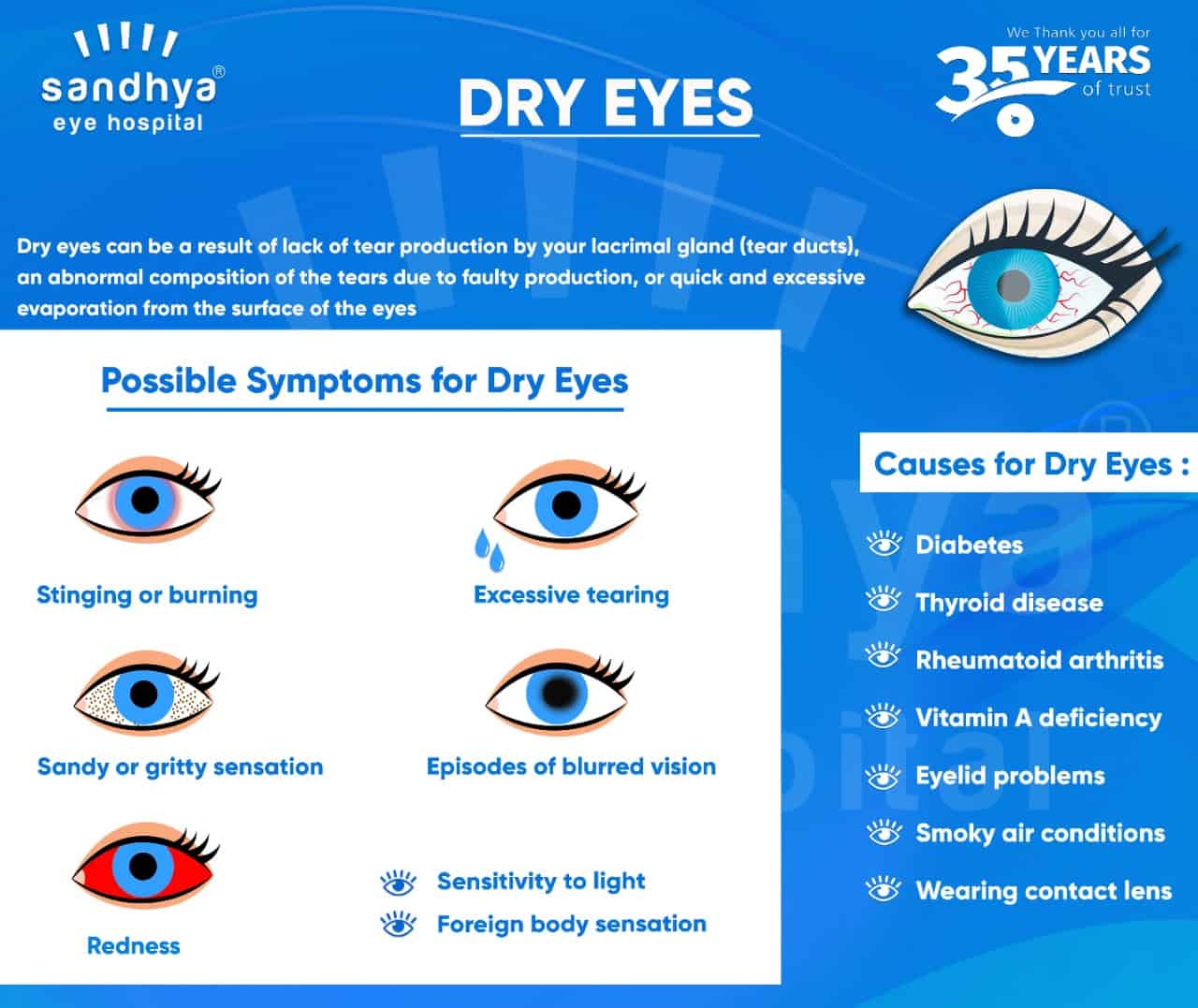Dry eyes are not a disease entity per se but more of a symptom which has complex range of causes and complications. Tears are very important as they lubricate the eyes continuously and keep them smooth and clear. They are made up of a mixture of water, oils and mucus. Dry eyes can be a result of lack of tear production by your lacrimal gland (tear ducts), an abnormal composition of the tears due to faulty production, or quick and excessive evaporation from the surface of the eyes.
Possible causes
- Aging
- Sjorgen syndrome – an autoimmune disease which involves multiple systems and typically affects women between 40 and 50 years
- Diabetes
- Thyroid disease
- Rheumatoid arthritis
- Vitamin A deficiency
- Anti-histamines, anti-hypertensives, decongestants and anti-depressants
- Eyelid problems
- Smoky air, windy conditions
- Wearing contact lens
- Rare causes include scarring of additional tear glands or foreign body production
Possible symptoms
- Blurred vision
- Scratchy sensation of the eyes
- Redness in the eyes
- Excessive tear production, to counteract the dryness
- Eye fatigue
- Sensitivity to light
- Foreign body sensation
- Difficulty in visualizing things during the night or low light conditions
Visit your doctor if these symptoms are troubling you. They might perform a comprehensive eye examination and run a few tests to figure out the cause and take appropriate actions to prevent unwanted complications.

Diagnosis
- Tear film test – A tear film breakup-time test called BUT may be performed to diagnose dry eyes. A drop of dye will be placed on your eye and the doctor will use a slit lamp (a bio microscope for your eyes) to calculate the time it takes for the tear to breakup. Anything less than 10 seconds is a troubling finding.
- Schirmer test – A filter paper is attached to the eyes and left in place or 5 minutes. Normally up to 15mm of the paper becomes wet because of the tears in this duration. Anything less than 10mm is suggestive of dry eyes.
- A stain (dye) called Rose Bengal might be used to check the presence and severity of Sjorgen Syndrome.
Possible Complications
- Difficulty in reading papers causing a fall in quality of life.
- Abrasions (injury) to the eye.
- Inflammations and infections of the eye as the tears play a vital role in protecting the eyes from germs and tiny particles of dust and sand.
- Vision problems.
- An ulcer in the eye.
Treatment
- Supplementation of tears with tear substitutes.
- Mucolytics which decrease the tear viscosity (thickness).
- If eyelid problems are detected, your doctor might suggest corrective surgery.
- Vitamin A supplementation.
- Antibiotics to prevent infections.
- Treatment of underlying condition such as Sjorgen Syndrome.
Preventive measures to fight dry eyes and its complications
- A humidifier can increase the moisture content in your room during winter.
- Protective eye wear to prevent evaporation of the tears.
- Avoid blowing any kind of air, hot or cold, into your eyes.
- If you live in high altitudes or dry arid conditions like deserts, remember to close your eyes regularly.
- Take breaks while working because while we are concentrated we tend to forget to blink subconsciously.
- Stop smoking.
Maintaining eye hygiene and regular eye check-ups are adequate to prevent complications of dry eyes.

